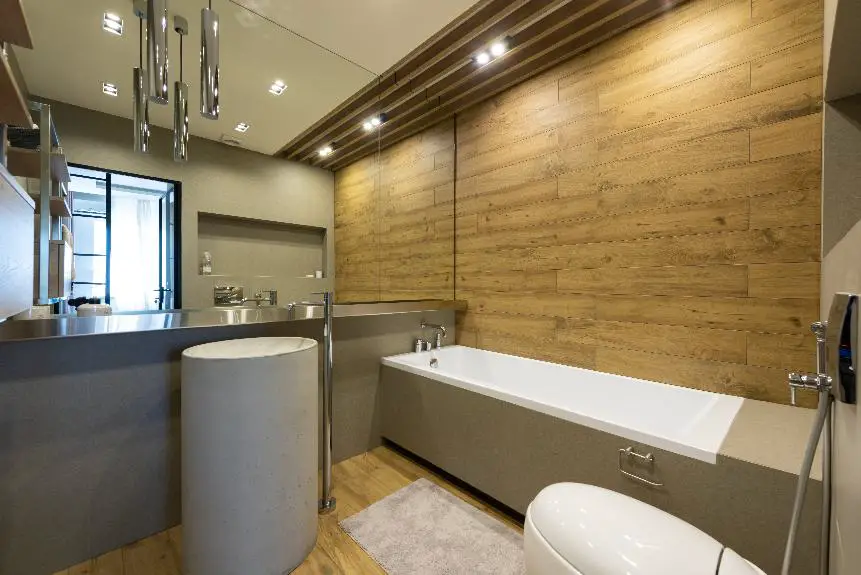Bidet toilets may or may not need electricity, depending on their features. Electric bidet seats offer temperature control, warm air drying, and deodorizers and must be plugged into an outlet.
Non-electric bidet attachments operate using water pressure and do not require electricity, offering basic cleaning without luxury features.
Choosing a bidet toilet involves deciding on the features you want, which determines if an electrical supply is necessary.
Understanding Bidet Power Requirements
Bidet toilets have varying power requirements based on their features. Basic bidet attachments usually don't need electricity and run on water pressure alone. In contrast, electric bidet seats with functions like remote control, seat heating, and temperature adjustments need a power source.
For installation, it's important to have an electrical outlet close to the toilet. This avoids the need for extension cords, which are unsafe. Most modern bathrooms come with an outlet that can be used for this purpose.
The power consumption of bidet seats can be low, but some, like tankless models, may use up to 1400W at their highest setting. Typically, these do not require a separate circuit and can work on standard bathroom circuits if no other high-power appliances are running at the same time.
Safety-wise, the outlet should be a GFCI outlet to prevent electric shock, a key consideration in wet areas like bathrooms. Installation should follow local electrical codes, which generally require GFCI outlets in bathrooms for safety.
Types of Bidet Toilets Explained
Bidet toilets come in two primary types: non-electric bidet attachments and electric bidet seats.
Non-electric bidet attachments are basic and cost-effective. They connect to your current toilet and use the home's water pressure to function, providing a simple wash without needing an electrical outlet.
Electric bidet seats offer more features, requiring an electrical source. They may include a water heater for warm water, adjustable settings for water temperature, pressure, and nozzle position, as well as seat warmers, air dryers, and deodorizers. Some have remote controls for added convenience.
Choosing between a non-electric bidet attachment and an electric bidet seat depends on whether you prefer simplicity or additional features. Non-electric models might not have warm water unless they're connected to a hot water line. Electric models usually have a built-in heater for warm water.
For installation, electric bidet seats need a GFCI grounded electrical outlet for safety and to meet electrical standards.
Electrical Installation for Bidets
Installing an electric bidet seat requires a GFCI outlet close to the toilet for safety and to meet electrical codes. GFCIs prevent electric shock in wet areas by interrupting power when faults are detected. A standard 15amp outlet is usually adequate for a bidet seat's power needs, and bidet cords are typically long enough to reach outlets within a few feet.
Bidet seats often do not need their own circuit if the bathroom's electrical system is modern. However, older homes might require a dedicated circuit, especially for tankless bidets that can use up to 1400W. This prevents problems like flickering lights or tripped breakers.
Before installing a bidet, check local electrical codes as they can differ. It is advisable to hire a licensed electrician to ensure the installation is safe and compliant.
Benefits of Electric Bidet Toilets
Electric bidet toilets provide improved hygiene and comfort with features like adjustable water temperature and air drying. Users can personalize settings for water pressure and temperature. These toilets are particularly beneficial for sensitive skin and offer a more effective wash.
Heated seats in electric bidet toilets offer comfort in cold weather, eliminating the unpleasantness of a cold seat. The air-drying feature also decreases the reliance on toilet paper, supporting an eco-friendly approach with the convenience of hands-free drying.
Installation of electric bidet toilets requires a nearby electrical outlet. Some models may need a dedicated circuit for safe and stable operation. It's important to consider the bathroom's electrical layout for proper installation.
Electric bidet seats are advanced in terms of hygiene, comfort, and environmental sustainability.
Comparing Electric and Non-Electric Bidets
Electric bidets offer features like adjustable water pressure, temperature control, heated seats, and air drying. They require a connection to a 15amp, three-prong grounded electrical outlet. Installation may be complex if the bathroom lacks the necessary power source.
Non-electric bidets are simple, with mechanical operations that do not require electricity, making them easy to install in any bathroom. They lack advanced features but are more affordable and eco-friendly.
The choice between electric and non-electric bidets depends on personal needs and comfort preferences. Electric bidets suit those wanting multiple functions and who have the required electrical setup. Non-electric bidets are better for those prioritizing simplicity, cost savings, and who prefer to avoid electrical installations.
The best option depends on the user's individual requirements.
Making the Right Bidet Choice
Selecting a bidet involves considering lifestyle and preferences, especially between electric and non-electric models. Electric bidets offer advanced features such as remote control and seat heating, but require a nearby electrical outlet and may need an electrical circuit capable of supporting the device, particularly for high-end models that might need a 15amp dedicated circuit.
Non-electric bidet attachments are simpler and more cost-effective. They operate using water pressure and do not need electrical power, which is beneficial for older homes where electrical modifications are difficult or expensive.





